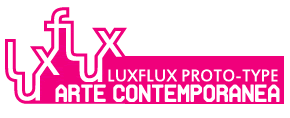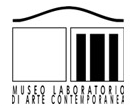My sporting carrier out of desperation! As I mentioned earlier, in the system of social realism, and of real socialism, sport was one of the favoured activities. Since mine was a case of forced dissociation, I couldn’t study or go forward. This meant being consigned to the lowest existential level. Luckily, aged 17, I discovered that I had athletic abilities.
During the first competitions, as a junior, I began to win the lower level hammer throwing competitions, showing notable potential. This was followed by the junior national championship, which I won, and I then found myself in international competitions.
Following this, “Red Star”, Belgrade’s famous sporting club, gave me the opportunity to become part of the athletics team, and I did. I was considered to be a talent of great potential by the expert coaches of “Red Star” and so they gave me a contract. I was out of the nightmare. Soon I entered into the Yugoslavian national team, I won the title and, in short, I had arrived at the top. I was also a candidate for the 1960 Olympics in Rome, but I was held back by a pulled muscle, but then I recovered. I was active until 1968, after which I began to take my interest in art more seriously.
However, returning to the political question, I would like to give a more clear explanation of why I was rejected by the regime. There were, in fact, various reasons: one was because I was from a family of Montenegrin nobility, another was because my father was an ex-officer of the monarchist army founded during the second world war, these were neither my merit nor my fault; and then I was publicly aligned with the intellectual supporters of the Chinese revolution, of the so-called “cultural revolution” which moved from soviet futurism to Mao’s revolution. In short, this was more than enough, but by becoming a sporting champion I was forgiven. However, I have never belonged to anything, apart from the “Red Star” athletics team. In 1969 I left Yugoslavia and found myself in Italy, in Bologna. I discovered the art of the contemporary Italian avant-garde, as well as the historical avant-garde of Italian futurism, and the whole climate of the movements of the “sessantottismo” [ed. relating to the 1968 protest movement]. I had already done it at the University of Belgrade, and by consequence I had to quickly leave Belgrade and the country. In Bologna, at the university, where I had enrolled (at the Accademia delle Belle Arti), I found everything that I wanted to find: rebellious energy, the emancipatory dynamism of the left, libertarian life; and for the first time I saw my generation as I had dreamt it in Belgrade, beautiful and alive.
I tried to reorganize my mind straight away, to connect the strengths I had with new ones: culture, politics and the movement, in order to create my nucleus of mental energy and to try my luck with art. I realized that performance could be nourished by valuable elements of the experience lived in the stadium, in the throwing circle, the power of concentration and the capacity of the gesture of maximum psychophysical energy; and to this experience the concept of artistic value could be added: the expressive form, the conceptual message, the ability to communicate and other specific things, including art/ life/ideas/concepts…
**Part of the interview with Vania Granata, November 2003.

Ilija Soskic, Sheafs, installazione, legno e pelle, 1962. Courtesy Museo d’Arte Contemporanea Ljubljana


